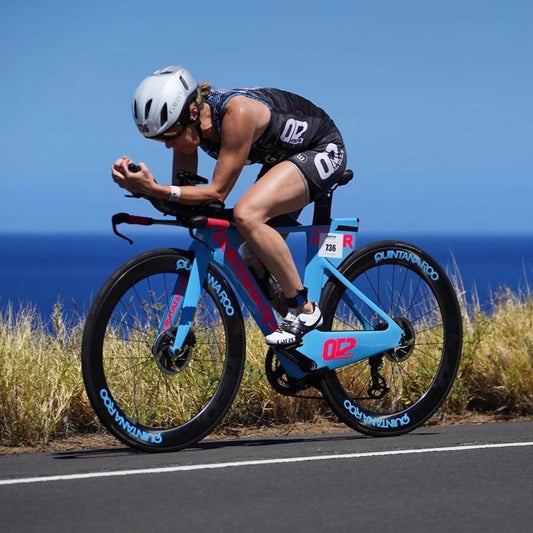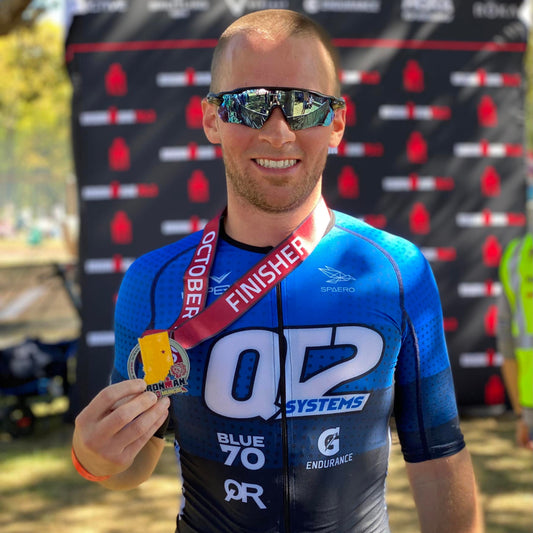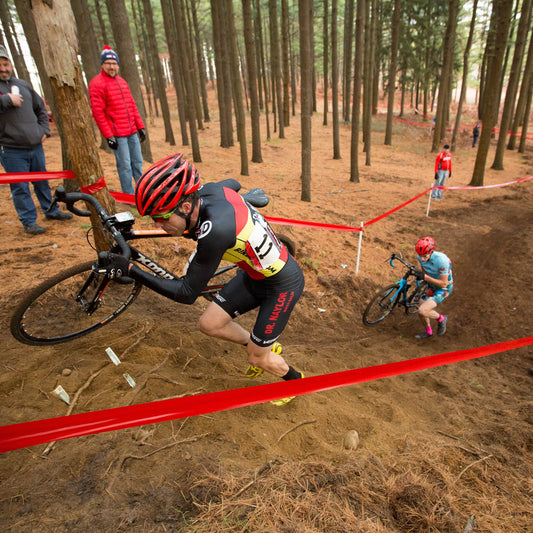The Top 13 QT2 Principles
The list below represents the fundamental, qualitative ideas behind the QT2 training protocol. Follow each recommendation to the letter and your race performances/training will have a much greater probability of success:
1) Take The Easy Days Easy - When you have planned a recovery day (which should be 2-3 per week when doing best effort sessions), make sure you do not exceed 80% of your threshold heart rate during your workouts that day. If you go too hard on these days, you fatigue, and don't allow proper recovery of your peripheral systems. This will limit stimulation of your core systems on the next best effort workout due to residual fatigue. This sub-par performance during your key day typically results in testing yourself on the next recovery day which begins a nasty cycle of gray, middle type training. Make the hard days hard, and the easy days VERY easy.
2) Descend Everything - Every single season, workout, set, mile, or yard you do should be paced to finish strong. This includes everything from recovery runs to repeats at the track. The purpose of this is to engrain that behavior for racing, and allow your soft tissue to progressively adapt to larger and larger loads.
3) Use a Recovery Drink - There is no better way to improve the physiological benefit of your workouts and improve your overall recovery. This drink should be used following all workouts that are draining including best effort days as well as long days. Ideally, your recovery drink will contain a high glycemic carbohydrate such as dextrose, and easily digestible protein such as whey. Moreover, a good recovery drink is one that has a 4:1 or 3:1 carbohydrate to protein ratio. This will help replenish muscle glycogen and begin the muscle recovery process.
4) Never, Ever, Bonk - Fuel properly during training. Never step out the door without at least 2 gels (or 1 bar) more than what you believe is required for your workout (at least 1/3 your body weight in CHO per hour). The physiologic impact of a bonk is so great that you just can't afford to let it happen. There are many, many things that you don't have control over in triathlon. This is NOT one of those. Take advantage of that fact.
5) Make the Hard Days Hard - Your hard days should be VERY hard. That is, at a sustainable best effort. Remember, #2 above still applies here. Therefore, if you set out to do 1 mile repeats, do them at the best possible effort (pace) you can sustain for all 5 repeats. If you pace your workout properly, the last repeat should be run at an all out effort but result in a time/pace equal, or slightly faster than the previous 4.
6) Limit intake of grains/refined sugars - Grains and any processed sugars should not be consumed unless you are eating them within an hour of a workout, during a workout, or in a post-workout window equal in length to the workout itself. This will avoid unnecessary spikes in blood sugar that tend to cause storage of bodyfat. In addition, the limited intake of grains and sugars between workouts will leave room for more fruits, vegetables, and proteins which are much more nutrient-dense.
7) Sleep at least 7.5 hours per night - Training breaks you down. Rest and nutrition build you up. This is a no brainier. Training is useless without proper rest (and nutrition).
8) Don't Race Too Much - Once the season starts, be careful not to race too much. Most races (should) require some sort of taper and recovery and therefore begin to dent training volume. As trailing volume (average of the previous 6 weeks' total volume) begins to fall, race performances will decline due to an eroding aerobic base and loss of sport specific feel. This becomes very common with athletes chasing that elusive Kona slot. They try to qualify once, and miss it, so they try again too soon without putting in a proper cycle of training and miss again. They continue to miss due to much too frequent racing, lack of training volume, and inadequate recovery leading to burnout. At the same time they are mentally discouraged from sub-par performances. I call this race gluttony. Go for a quality approach instead of a quantity approach. Racing is lots of fun, just don't get too glutinous!
9) Race The Distance You Are Trained For - There are very few training protocols as potent as volume. Because of this, if you do not have adequate training volume for your event, your performance will suffer significantly due to system failure. You also run the risk of injury and/or an extreme amount of recovery time following the race. To ensure this does not happen to you, hit at least 2/3 of critical volume for your race distance. If you can not do this safely, we recommend racing a shorter distance. Remember though, at the longer distances such as Ironman, this level of training (2/3 critical volume) can take years to reach safely.
11) Take Off The Loose Baggage - This one is more frustrating than any other thing triathletes ignore. Losing excess weight, WILL have the largest effect on your race performances versus any other thing you do. It can take years of training to gain the improvements seen from a 5 pound weight loss. What's more frustrating is that you see folks spending thousands of dollars on aero/light equipment that will give them seconds, while carrying around 10-20 pounds of extra weight that could give them 20-30 minutes at there next ironman. Don't make this mistake.
12) Never Train Through Races - We do not recommend training through races for a few reasons. First off, going into a race fatigued sets up mental excuses before the gun even goes off. When the performance doesn't come out to your expectation, it always comes back: "Well, I was training through this one." This is a bad mental cycle to get into (i.e., a mental cycle of excuses). You should be ready to go 100 percent every single time the gun goes off. Secondly, a good recovery going into your races is probably something you need anyhow. Most folks after weeks of training don't take adequate recovery days, especially during the race season. Thirdly, going into races with a fully recovered peripheral system allows for much better stimulation of your core system during the race, and a better shot at pushing your limiters. If you need volume for the week, you're better off getting it in following the race versus the day before. With this rested approach, you end up getting a solid recovery going into the race, then get a very good quality day on race day. This is much better than two sort of gray, mediocre days. The key to the quality approach is that you get a solid recovery following the race.
13) Have a Plan - We see too many folks approach their training without a plan to look forward at (including many with coaches!). All training should have a specific purpose depending on the time of year and personal limiters, and possess a gradual buildup of volume prior to peaking for your major "A" races. Without this plan, too many folks increase volume or intensity too quickly or too soon and end up injured. Remember, unreasonable buildups lead to injury, injury kills consistency, and consistency is the key to unlock your potential.
There is no magic......
-Jesse





